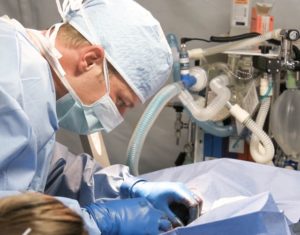After you finish an interview for a US medical residency program, you’re probably ready to breathe a sigh of relief and take some time to relax. Even though most residency interviews only last one or two days, an interview can be a whirlwind experience–in which you are constantly under pressure to make a good impression, while also trying to figure out whether or not the program is the right fit for you. Successfully getting through the interview day(s) is no easy task, but when you leave, you’re not quite done yet. As soon as the interview is over, you need to start thinking about sending follow up emails to your interviewers and your other contacts at the program. Read on for more information about writing a follow-up email after a US medical residency interview.
The Basics of Residency Follow-Ups: When, Who, and How
- When to follow up. Ideally, you should send follow-up emails within two to three days of your interview. Waiting much longer than that may suggest a lack of interest in the program, which may detract from the positive impression that you worked so hard to make during the interview itself. Plus, it’s best to write the email while the interview experience is still fresh in your mind. That way, you won’t have trouble coming up with the content of the email (see below for tips), and you won’t have to worry about getting your interview experiences at different programs mixed up.
- Who to follow up with. The question of who to email depends largely on the nature of your interview experience. At the very least, you should send a follow-up email to the program director and anyone with whom you were in contact during the interview preparation process, such as the interview coordinator. For most programs, you will have three to five formal interviews, and it’s best to try to email each one if you can. In addition, you may want to send a follow-up thank-you email to the residents and/or other faculty members who had a meaningful impact on your interview experience. However, don’t just send the a generic email to every single person you met while you were visiting the program. Remember, they all work in the same place, and they are likely to talk to each other!
- How to get in touch. In the past, many medical residency candidates were advised to follow up with a handwritten letter. However, in the digital age, a professional email is now considered to be acceptable–and it’s probably the preferred method of communication for most of the contacts at your program. In fact, since it can take a long time for the US Postal Service to get the letter to your program–especially if you are sending the letter from abroad–choosing to handwrite your thank-you note instead of sending an email may put you at a disadvantage, because your contacts at the program may notice how long it took you to follow up.
What to Include In Your Follow-Up Email
As a general rule, it’s best to keep your follow up email short and simple. The interviewers and program coordinators will probably be excited to hear from you, but they’re also professionals with busy schedules. Therefore, you should limit your email to two to three paragraphs. Here are a few of the most important things to include:
- A sincere thank you. Remember, this email is primarily a thank-you note. More than anything, you should express your gratitude for the opportunity to visit the facility and learn more about the program. On the program’s side, there’s a lot of work that goes into setting up your interview, so coordinators, interviewers, and currents residents will appreciate your acknowledgement.
- An expression of genuine interest in the program. Even though the official interview process is over, you still want to indicate your interest in the program, which can increase your likelihood of getting matched. In your email, try to point out a few specific aspects of the interview experience that stood out to you and truly shaped your perspective on the program. That way, you can clearly demonstrate that you truly appreciate what the program has to offer for you as a potential resident.
- Any additional questions you may have. Throughout the interview days, there are lots of opportunities to ask questions, but if a question came up as you were reflecting on the experience, the follow-up email presents a great opportunity to ask. Not only does it signal to your contact that you are still seriously considering the program, but it also allows you to get the answers you need, well in advance of the deadline for your ROL.
Need more tips for medical residency interview success? FMG Portal offers everything foreign medical graduates need to successfully match to a US medical residency program. Contact us today for more information!









